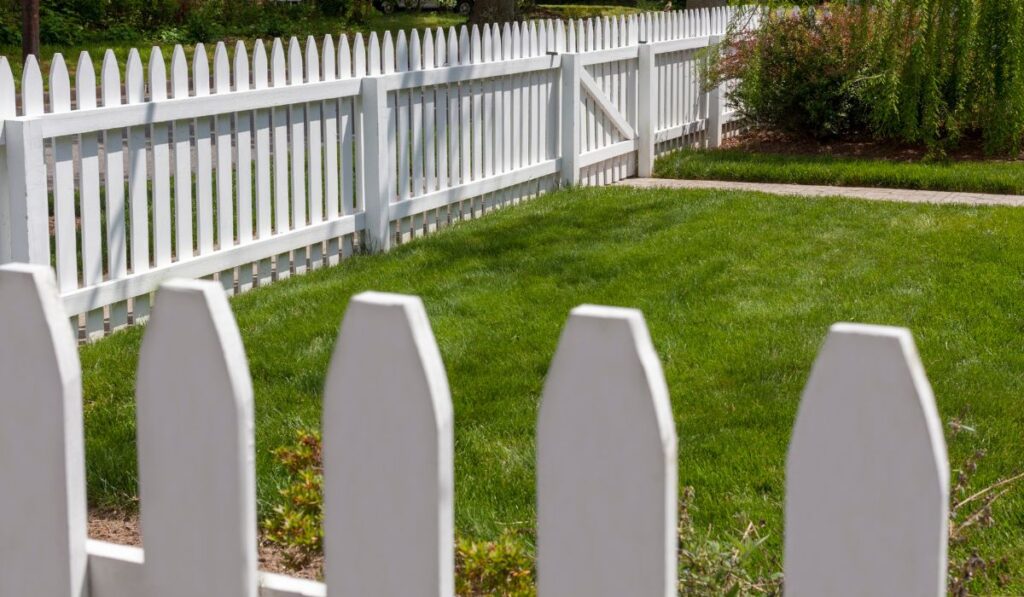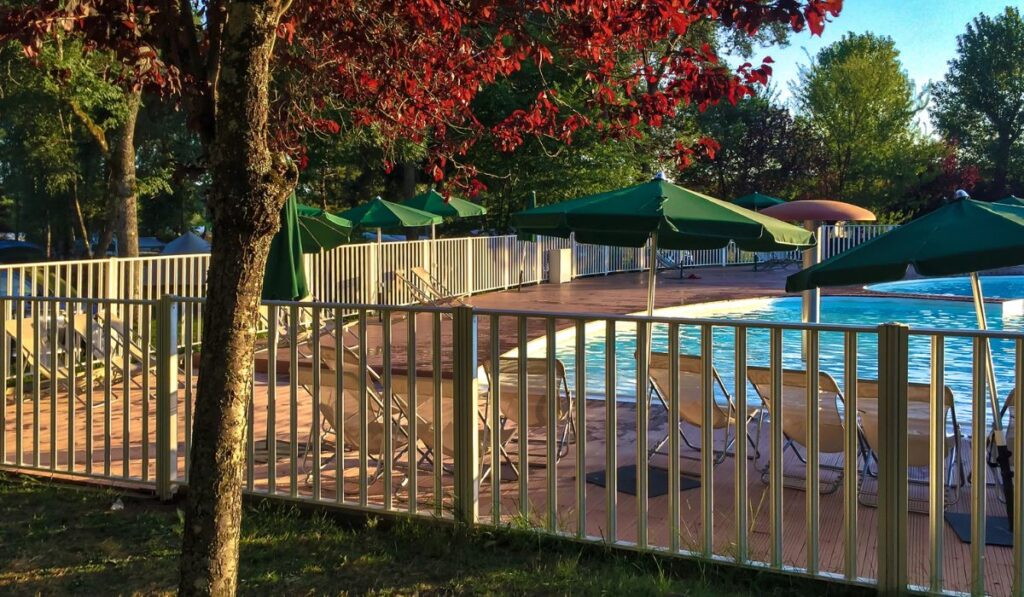Whether you have been in your home for decades or you just bought a new one, once in a while, you should take a look at your fence. A well-made and well-maintained fence is a beautiful and functional addition to any home. But no fence, regardless of material and style, can last forever. At Bravo Fence Company, we install fences that will last for decades, especially if cared for properly. But even our fences have their limits. Eventually, it is time for a new fence.
Of course, fences don’t just fail all at once. Usually, fences deteriorate slowly over many years. So when is it time for a new fence? In many cases, fences can be repaired. In fact, a reasonable amount of repair work should be considered part of proper maintenance. But a time will come when repairs just aren’t worth it anymore; when it’s time for a new fence. It’s not always an easy choice. But in this article, we’ll try to help you decide when that time has come.

1. You’ve Noticed Holes in Your Wood Fence
A well-installed wood fence can last for a long time. At Bravo Fence, we install fences for the long run. We use high-quality materials and recommend appropriate maintenance, such as annual painting or staining. But even the best wooden fences are subject to the same forces as all organic materials. Heat, cold, sun, and rain slowly beat away at a wooden fence over the years. Pest like termites, carpenter ants, carpenter bees, and other burrowing bugs can take their toll. Tiny fungi and plants can rot out wooden posts and boards. As all of these forces combine over a long time, every wooden fence will eventually need to be replaced.
If you can see through any part of your wooden fence, you need repairs at the very least. If only one or two boards have holes, you might consider replacing just those boards. But if the holes are more widespread, they are probably indicative of more severe damage. Holes in multiple boards are a telltale sign of a failing fence. Whether the cause of the holes is pests or rot, the damage is probably more extensive than you can see. Even if you repair the affected boards, chances are that you won’t get all the damage. At that point, it might actually be less expensive to tear down the fence and replace it than to keep making repairs. In short, it’s time for a new fence.
2. Your Steel Fence Has Extensive Rust Marks
Steel fences are as beautiful as they are fickle. Modern steel fences are coated with special materials to resist rust, but even so, it is recommended to do an annual inspection for rust spots. After the inspections, rust spots must be sanded to remove the rust and then painted with rust-resistant paint. If you ignore small rust spots, they will only get worse. Over time, rust eats away at the metal and can cause your fence to literally fall to pieces. Rust is most common at joints where two pieces of metal were soldered together. If you let rust get out of hand, the fence can start coming apart at the seams.
Some amount of rust is inevitable and can be spot treated. But extensive rust is a sign that it’s time for a new fence. Even where rust is spot treated, the resulting joint is often less reliable than the original. Too many repairs can also make a fence look splotchy. Steel fences can last a long time, but not forever. If your fence is showing signs of rust across the whole fence, it may be time to give in and build a new fence.
3. Your Fence is Leaning
A privacy fence is meant to stand as a strong, tall barrier. It keeps children and pets inside its bounds. It keeps prying eyes out of your private space and blocks unsightly views outside your property. Privacy fences are the most common residential fence in America. As a nation, we value our privacy and our property. So when your fence begins to falter, something must be done.
If your fence is doing anything other than standing up straight, it is time to consider a new fence. In most cases, by the time a fence is leaning, it is too late for repairs. There are a few reasons a fence might lean. If a fence is leaning, something is usually wrong with the posts. Posts hold the fence in place and are typically anchored into the ground with cement over a gravel base. The cement holds the posts upright, but the cement itself is poured into a hole in the ground. If the ground shifts, the whole cement footing and the post it holds can tilt.
The ground may shift due to flooding or water that saturates the ground. Tree roots can also push posts out of alignment. If a post hole wasn’t dug deep enough, it can shift as the ground freezes and unfreezes. (That’s ultimately the fault of the installers. Fence post holes should be dug to at least below the freeze line.)
Fences can also start to lean if the posts are rotting, even if their bases are secure. If your posts or railing are weakened by rot, they may begin to lean under the weight of the fence.
In addition to problems with posts, metal fences can lean if they have been dented or damaged.
4. Your Wood Fence is Discolored
A wood fence can be a beautiful thing. Many homeowners choose to stain the wood instead of painting it to enjoy the natural beauty of the material. Some may even use clear sealants that preserve the natural look of the fresh wood. Whichever type of finish you choose for your wood fence, the finish should be reapplied annually to keep your fence protected against the elements.
Over time, wood is subject to deterioration, like any organic material. Even something as gentle-seeming as sunshine can attack your fence. The same UV rays that affect humans—the reason dermatologists urge you to wear sunscreen—can degrade your wood fence over time. The most common effect of UV rays is bleaching, in which a fence starts to lose its color and slowly fades to a light gray color. But the color change is just the most visible effect. As a fence grays, it also dries out and loses structural integrity. It may start to splinter or more easily chip, split, and break. If your fence has turned colors, take a look around for other weaknesses and signs of damage. And don’t wait until it gets worse. If your fence is gray, it’s time for a new fence.
5. Significant Accidental Damage
If your fence has significant accidental damage, it is time for a new fence. It may seem like obvious advice. But many homeowners imagine that they can just repair the damaged area and move one. The fact is, it really depends on the size of your fence, the extent of the damage, and the type of fence. Wood fences are the most resilient to accidental damage since they can often be repaired in sections. Metal fences often fare poorly when it comes to significant damage, as the damage is rarely restricted to just the immediate area of the accident.
If your fence has sustained significant accidental damage—for example, a tree falling on the fence or a car crashing through it—there are other reasons to opt for a full replacement. First, even if you repair the damage you can see, it’s hard to know how the surrounding area was affected. Weakened posts and loose footings may cause more damage in the future. Also, no repair is perfect, and it’s tough to match a new fence to a weathered fence. If you want your fence to match all the way through, consider a full replacement. Of course, if you have a very long fence, such as a rural fence, a large property, or a commercial fence, you may not need to replace the whole thing.
The Best Bet When It’s Time for a New Fence
If you need a new fence, you’ve already found the best place to get it. Bravo Fence Company is the premier fence builder in the Atlanta area. We build fences to last, and we offer a wide range of styles and materials. Take a look at our gallery to see what we do. And when you’re ready for your new fence, contact us for a free quote!






